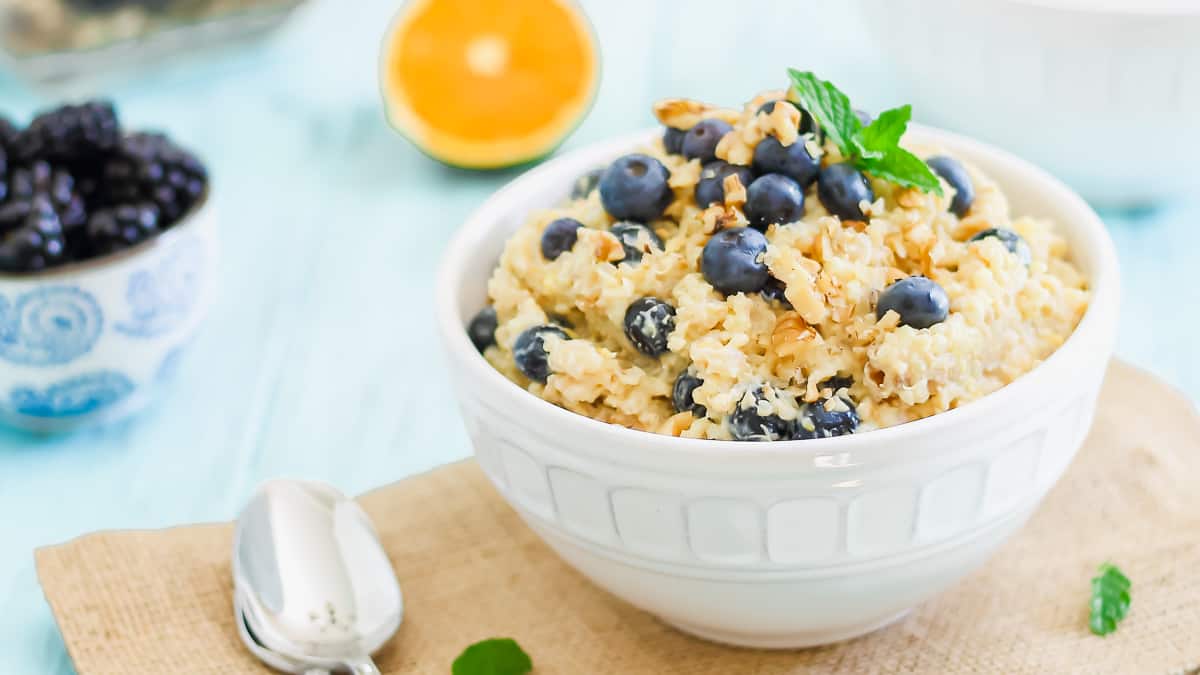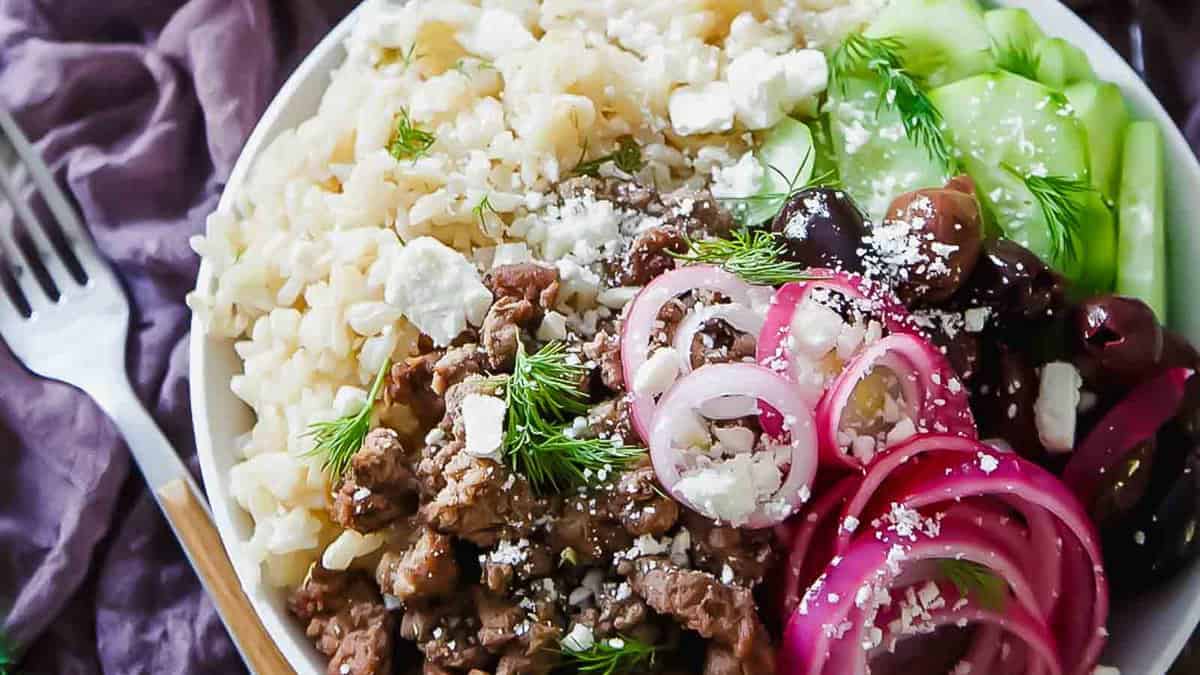Wheat may dominate most kitchens, but it’s far from the only option—and definitely not the best. Ancient grains have been feeding people for centuries, packing more nutrients and flavor than the stripped-down wheat we rely on today. From gluten-free powerhouses to fiber-rich varieties that keep you full longer, these grains offer plenty of reasons to branch out. They’re also surprisingly versatile, fitting seamlessly into everything from salads to baked goods.

Quinoa


Quinoa is a powerhouse grain that’s naturally gluten-free and contains all nine essential amino acids, making it a complete protein. Rich in fiber, magnesium, and iron, it helps support digestion, heart health, and energy levels. To enjoy, rinse thoroughly and cook like rice. Use it as a base for grain bowls, toss it into salads for added texture, or stir it into soups for a protein boost. It’s also excellent for breakfast when simmered with milk and topped with fruit.
Farro


This ancient wheat variety boasts more protein, fiber, and antioxidants than modern wheat. Its nutty flavor and chewy texture make it a versatile and satisfying alternative. Farro is also rich in zinc, magnesium, and iron. Cook it like pasta by boiling until tender, then drain. Use it as a salad base with roasted vegetables and vinaigrette, mix it into hearty soups, or create a warm farro risotto with mushrooms and Parmesan.
Amaranth


Amaranth is a gluten-free grain high in protein, lysine (an amino acid lacking in most grains), and minerals like iron, calcium, and magnesium. It’s great for bone health and muscle repair. Amaranth can be simmered into a creamy porridge for breakfast, added to soups for thickness, popped like popcorn for a crunchy snack or even turned into a pudding. Combine it with honey and nuts to make homemade energy bars.
Millet


Millet is an easily digestible, gluten-free grain that’s rich in magnesium, phosphorus, and B vitamins. Its low glycemic index makes it perfect for managing blood sugar levels. Cook it by toasting first for a nutty flavor, then boil until tender. Use it in place of rice, add it to soups, or bake it into casseroles. It also works well as a creamy base for pilaf when cooked with broth and aromatics. We love it as an oatmeal replacement in this porridge recipe.
Teff


Teff, a tiny grain native to Ethiopia, is gluten-free and packed with iron, calcium, and resistant starch, which supports gut health and blood sugar regulation. Its slightly sweet and earthy flavor makes it perfect for porridge. Simmer it for a creamy breakfast topped with nuts and fruit, or use teff flour to make pancakes, muffins, or injera—a traditional Ethiopian flatbread.
Sorghum


Sorghum is gluten-free and packed with antioxidants like phenolic acids and flavonoids, which reduce inflammation and support heart health. It’s also a good source of protein and fiber. Boil it like rice for salads, stew it in soups, or pop it like popcorn for a fun snack. Ground sorghum flour is ideal for gluten-free baking, adding a mild, nutty flavor to breads and muffins.
Spelt


Spelt is an ancient cousin of modern wheat with a nuttier taste and higher levels of protein, fiber, and B vitamins. Its lower gluten content often makes it easier to digest. Use spelt berries in grain salads or soups, or substitute spelt flour for wheat flour in baking. It’s excellent for rustic breads, pancakes, and even pizza dough for a more nutritious take on classics.
Kamut (Khorasan Wheat)


Kamut is higher in protein, selenium, and zinc than modern wheat. Selenium supports immune health, while zinc is vital for cell repair. Its rich, buttery flavor makes it perfect for salads, soups, and casseroles. Cook the grains until tender and toss with herbs and lemon, or use Kamut flour for baking cookies, muffins, or even homemade pasta.
Einkorn


Einkorn is one of the earliest cultivated grains and has a lower gluten content than modern wheat, making it gentler on digestion. It’s rich in beta-carotene and lutein, which support eye health. Use einkorn flour for baking breads, pancakes, or muffins, or cook the whole grains for a hearty pilaf mixed with herbs, nuts, and roasted vegetables.
Freekeh


Freekeh is young green wheat that’s roasted and packed with protein, fiber, and essential minerals like zinc. Its smoky, nutty flavor adds depth to meals. Simmer it like rice or use it in salads with fresh herbs, nuts, and feta. Freekeh also works well in stuffed vegetables like squash or peppers or as a hearty side dish with grilled meats.
23 Quinoa Dishes That Don’t Taste Like Diet Food


Quinoa has a reputation for being “health food,” but it’s so much more than that. It’s versatile, filling, and works in everything from hearty casseroles to fresh salads. These recipes show how quinoa can bring substance and flavor to your meals without feeling like a compromise.
Read it Here: 23 Quinoa Dishes That Don’t Taste Like Diet Food
15 Grain Bowls That Prove Healthy Doesn’t Have to Be Boring


Grain bowls are the perfect way to pack a lot of flavor and nutrition into one simple meal. They’re easy to make, versatile, and anything but boring. Whether you’re looking for a hearty lunch or a light dinner, these grain bowl recipes will keep you excited about eating healthy without having to suffer through salads.
Read it Here: 15 Grain Bowls That Prove Healthy Doesn’t Have to Be Boring
Gina Matsoukas is an AP syndicated writer. She is the founder, photographer and recipe developer of Running to the Kitchen — a food website focused on providing healthy, wholesome recipes using fresh and seasonal ingredients. Her work has been featured in numerous media outlets both digital and print, including MSN, Huffington post, Buzzfeed, Women’s Health and Food Network.


